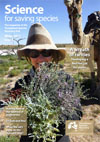Latest News
-

Exploring a haven for Yawuru Country
Tue, 26 Nov 2019Nyamba Buru Yawuru, whose traditional lands cover 5300sq km of subtropical coastal and inland savannah country around Broome in Western Australia, are exploring opportunities to develop a predator-free wildlife sanctuary on their country.
-
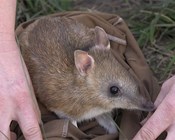
Genetic rescue for threatened species: Bandicoot bounces back
Tue, 26 Nov 2019Conservation geneticist Andrew Weeks of The University of Melbourne believes genetic rescue is going to be an increasingly important strategy for many species of flora and fauna with small and heavily fragmented populations.
-
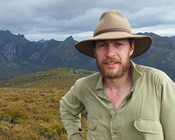
Obituary Dr David Blair
Tue, 26 Nov 2019Dave Blair was a valuable member of the Threatened Species Recovery Hub who worked tirelessly in the wet ash forests of the Central Highlands of Victoria for more than a decade. Thank you to Dave Blair for the truly colossal contribution he made to the world in so many ways!
-

A review of listed extinctions in Australia
Tue, 12 Nov 2019100 Australian endemic species are listed as extinct (or extinct in the wild) since the nation’s colonisation by Europeans in 1788. The list includes 38 plants, 34 mammals, ten invertebrates, nine birds, four frogs, three reptiles, one fish, and a protist.
-
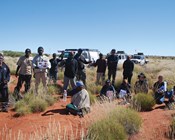
A Martu method for monitoring mankarr (greater bilby)
Tue, 20 Aug 2019Kanyirninpa Jukurrpa (KJ) Rangers in the Martu Determination have collaborated with Threatened Species Recovery Hub scientists to design a monitoring program for mankarr (the greater bilby). Martu people identified priorities for the bilby monitoring program, then worked with Dr Anja Skroblin from The University of Melbourne to co-develop a monitoring method which brings together Martu knowledge and practice with Western conservation science.
-

Bradley J. Moggridge - TSR Hub Researcher Profile
Tue, 20 Aug 2019I am a proud Murri from the Kamilaroi Nation in north-west New South Wales. I grew up in western Sydney on Darug land and now live in Canberra on Ngunnawal land.
-
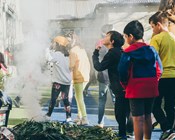
Connecting Victorian kids with Indigenous culture and the environment
Tue, 20 Aug 2019A new project is aiming to increase city kids’ connections with nature, threatened species conservation and Indigenous culture. Dr Georgia Garrard from RMIT University talks about this project, which will see Wurundjeri Woi-wurrung Traditional Owners working with kids at Carlton North Primary School in Melbourne and Gunditjmara Traditional Owners working with kids at Heywood Consolidated School in western Victoria.
-
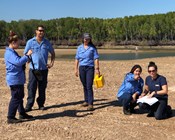
Larrakia action for the far eastern curlew on their saltwater country
Tue, 20 Aug 2019For the Larrakia Land and Sea Rangers, the sight of a shell midden in coastal saltpans tells a long history of culture and how their ancestors are connected with the intertidal and mangrove environment. Through a different lens, the Larrakia Rangers also see these shell middens as areas where their culture overlaps with the habitat used by the Critically Endangered migratory shorebird the far eastern curlew.
-
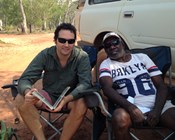
Looking after culturally significant and threatened species on the Tiwi Islands
Tue, 20 Aug 2019Threatened species on Indigenous land may be of prime interest to scientists and ecologists, but they are often not the species of greatest importance to the Indigenous landowners. Understanding local priorities for biodiversity is an essential step in ensuring that conservation projects are locally beneficial and supported. Researcher Tom Duncan from Charles Darwin University has been collaborating with the Tiwi Land Council and Tiwi Land Rangers to explore this issue on the Tiwi Islands.
-
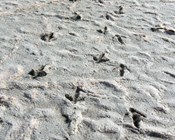
Reading the story written in Australia’s desert sands
Tue, 20 Aug 2019For over 10 years groups covering almost two-thirds of Australia have been using traditional Indigenous tracking skills to survey wildlife and their threats, usually at a local scale. A Threatened Species Recovery Hub project is working with over 40 groups to collate and analyse this wealth of information and to answer questions that the groups on the ground want answered to help them manage Country. Professor Sarah Legge and Dr Anja Skroblin take up the plot.
-
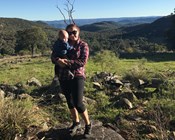
Taleah Watego - Drawn to work with nature and wildlife
Tue, 20 Aug 2019Growing up, I spent a lot of time camping at Stradbroke Island, Byron Bay and many other coastal places. I am a Bundjalung woman, so naturally I am drawn to the water. Wategos beach at Byron Bay was named after our family, and some of my elders were actually born in the lighthouse! Spending so much time around the water as a child made me want to work with nature and wildlife. While being a marine biologist was my first dream, I have found myself on a path of wildlife biology and conservation.
-
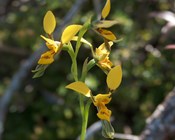
Working together to care for the Byron Bay orchid
Tue, 20 Aug 2019The Arakwal People of Byron Bay have recently undertaken their first cultural burn in over 30 years on the clay heaths of Arakwal National Park. They are also now more actively guiding decisions about the care of the rare Byron Bay orchid and its clay heath habitat, both of which are listed as Endangered under New South Wales environmental law. Cathy Robinson and Josie Carwardine from CSIRO and Norman Graham, an Arakwal and New South Wales National Parks and Wildlife Service Ranger, talk about their research collaboration.
-
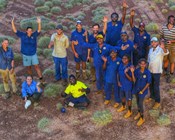
Appeasing Bluetongue Managing fire in the Great Sandy Desert
Tue, 13 Aug 2019Karajarri Rangers are leading a Threatened Species Recovery Hub research project to investigate how different fire management approaches affect biodiversity. The first field trip took place in April this year, when a team of 16 rangers, support staff and scientists journeyed to the Edgar Ranges for eight days of wildlife monitoring. Hub researcher Sarah Legge worked with the rangers to compile this report from the field.
-
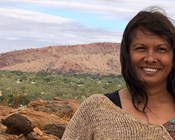
Changing the way research is driven
Tue, 13 Aug 2019Cissy Gore-Birch is a member of the Threatened Species Recovery Hub’s steering committee and the Chair of its Indigenous Reference Group. The Indigenous Reference Group was established to assist hub leaders and project teams to strengthen the engagement and participation of Indigenous people in the hub’s activities and research projects. Cissy recently attended the Species of the Desert Festival on the Paruku Indigenous Protected Area, where she spoke about both threatened and culturally important species, and increasing the voice of Indigenous people in environmental policies and research.
-
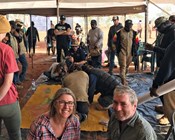
Indigenous people critical for threatened species
Tue, 13 Aug 2019Dr Sally Box, the Australian Government’s Threatened Species Commissioner, talks about the importance of working with Indigenous groups to conserve Australia’s threatened species.
-
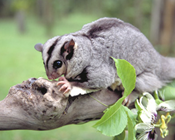
Australia’s possums and gliders
Tue, 09 Jul 2019There are 27 different types of possums and gliders in Australia. They have a huge variety of sizes, shapes and appearances. We’ve compiled a profile on every species here. One quarter of our possums and gliders are listed as threatened under Australian environmental law. Help their conservation, be a citizen scientist: you can record sightings of possums from your local areas in the free 'CAUL Urban Wildlife App'.
-

Restoring box gum grassy woodlands
Mon, 01 Jul 2019It was once possible to walk from Melbourne to Sydney through almost continuous grassy woodland. Today most of these temperate woodlands have gone. A team at The Australian National University have have embarked on a series of new experiments to investigate bird breeding success, noisy miner control, hollow supplementation and wildflower translocation.
-
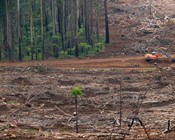
A million species at risk of extinction
Wed, 05 Jun 2019One million species threatened with extinction worldwide. That was the attention-grabbing headline that recently (and, sadly, briefly) captured the world’s attention, when the Intergovernmental Science-Policy Platform on Biodiversity and Ecosystems Services (IPBES) released its first global assessment of how the planet’s biodiversity is faring – and what that means for people.
-
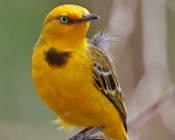
Kakadu collaboration for the yellow chat
Wed, 05 Jun 2019The Alligator Rivers yellow chat is a small, bright yellow insectivorous bird of the Kakadu floodplains. This Endangered species is imperilled by habitat changes caused by altered fire regimes, buffalo and feral pigs, rising sea levels and the spread of weeds like prickly mimosa and introduced grasses. What has been happening to degrade these floodplains has been equally of concern to Traditional Owners as to yellow chat researchers.
-

Making research partnerships work
Wed, 05 Jun 2019The central purpose of the Threatened Species Recovery Hub is delivering research that is relevant for and useable by decision-makers, land managers and others responsible for recovering threatened species. Working with partners is vital if we’re to achieve this.
-
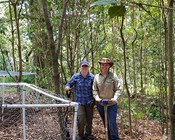
Norfolk Island’s threatened flora
Wed, 05 Jun 2019The native forest on Norfolk Island provides vital habitat for the island’s threatened plant and bird species, many of which are found nowhere else on the planet (also called endemic). When the British colonised Norfolk Island in 1788, they cleared much of the original vegetation. Remaining forest is now protected in the national park and reserves, but plant recruitment is poor and invasive non-native plant species would likely overtake the forest without the on-going efforts of park managers. To preserve remaining forest, it is important to determine the main causes of declines and the most effective actions that managers can take to address these threats and restore native vegetation.
-
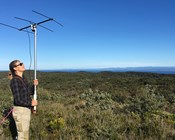
Reasons to be cheerful - Conservation success stories from Booderee National Park
Wed, 05 Jun 2019The Threatened Species Recovery Hub is celebrating great conservation outcomes from projects taking place in Booderee National Park for two Endangered species: the eastern bristlebird and the southern brown bandicoot (eastern subspecies). The Australian National University’s David Lindenmayer and Chris MacGregor give us the scoop on the bristlebird and Natasha Robinson shares the good news about the southern brown bandicoot.
-
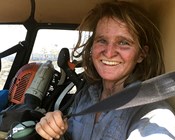
Researcher Profile: Rosemary Hohnen
Wed, 05 Jun 2019As a kid I spent a lot of time after school down the river with my blue heeler Blossom. We’d roam river edges looking for bunny holes, duck nests and new swimming spots and come home muddy and happy. While my old friend and those days are long gone, sometimes I find myself checking a pitfall trap in the rain with my face in the dirt and feeling like not much has changed.
-
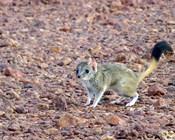
The kowari: Saving a central Australian micro-predator
Wed, 05 Jun 2019The roles that medium- and micro-predators play in ecosystems were first noted by Darwin. He observed that field mice prey upon “humble” bee nests, and that the abundance of cats in a district, through suppression of mice, may increase the flowering success of certain plants, such as clover. Aaron Greenville, Katherine Tuft, Rob Brandle and Chris Dickman discuss how the Australian arid zone is an ideal place to examine Darwin’s observation and its implications as they undertake research to help secure the future of the kowari.
-
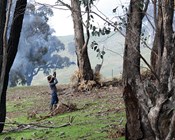
To cull or not to cull? Quieting the noisy miner
Wed, 05 Jun 2019The noisy miner is possibly Australia’s most successful native bird species. It is also one of the most hated, as its success has been at the expense of many other species of woodland birds, including several threatened species. For these reasons many people call for the bird to be culled – but does it work?
-
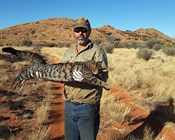
Tracking cats to help the night parrot
Wed, 05 Jun 2019Know thy enemy is a famous quote from Sun Tzu’s The Art of War. It is also a brilliant strategy when trying to saving an endangered species from a relentless threat. We talked to Dr Steve Murphy from The University of Queensland about new research which will GPS-track feral cats at Pullen Pullen Reserve.
-
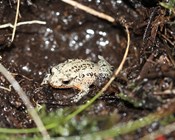
Why do tiny frogs persist or perish on a tiny scale?
Wed, 05 Jun 2019The white-bellied frog in south-western Western Australia is experiencing population extinctions throughout its small range. The driver of recent declines is a mystery, but Emily Hoffmann of the University of Western Australia is on the case. She presents some of the pieces of the puzzle here and asks some of the questions that may produce the clues we need to solve it.
-
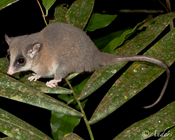
CAUL Urban Wildlife app Possums and Gliders Project
Fri, 24 May 2019About the Possum and Glider module of the CAUL Urban Wildlife App. The app is a collaboration between the Threatened Species Recovery Hub and the Clean Air and Urban Landscapes Hub of the Australian Government's National Environmental Science Program.
-
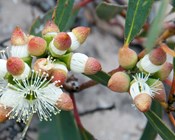
Eucalypt photo competition
Tue, 14 May 2019The hub is undertaking a nation-wide assessment of the conservation status of every Australian eucalypt species. To commemorate this achievement we are holding a photo competition to celebrate the beauty and diversity of Australia's eucalypts. Entries close 22 July 2019.
-
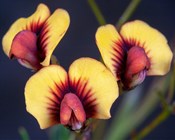
Call for threatened species data
Fri, 03 May 2019Do you have data on threatened or near-threatened Australian birds, plants or mammals? Please send it in by 15 June 2019 and it will be used to update Australia's first ever threatened birds index and to create indexes for plants and mammals by the end of the year.
-
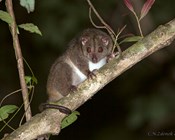
Call for photos for new possum monitoring app
Tue, 23 Apr 2019Many of Australia’s possums and gliders are under threat. Good information about where different species are greatly assists conservation programs. Members of the public can play a valuable role in helping to collect this information in their own backyards, and surrounding parks and natural areas.
-
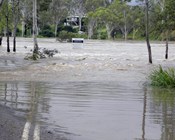
Droughts, heatwaves, floods and fires - Threatened species in a changing world
Tue, 12 Mar 2019The world is changing. Some of this change is planned and desirable. But much else is an unwanted consequence of the expansion of the human species. Those unwanted impacts will affect our lives and those of our descendants.
-

Georgia Garrard - Connecting people with biodiversity
Tue, 12 Mar 2019After undergraduate majors in Geography, Environmental Science and Botany, I did my PhD on native grasslands. I was struck by how these Critically Endangered ecosystems existing right on the edge of my city were being lost without most people even knowing about them – or understanding what amazing, super diverse ecosystems they are.
-
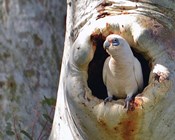
Gimme shelter: Conserving hollow-nesting birds
Tue, 12 Mar 2019What influences where birds choose to nest? About 15% of Australian birds, or 114 species, need tree hollows for breeding or shelter. The number of hollow-bearing trees is declining due to timber harvesting and development.
-

How did the fish cross the road? A new innovation to get fish past culverts
Tue, 12 Mar 2019Fish need to move to find food, escape predators and reach suitable habitat for reproduction. Dams, weirs and culverts can create barriers that fragment habitats, isolating fish populations. An Australian innovation, however, promises to help dwindling fish populations in Australia and worldwide.
